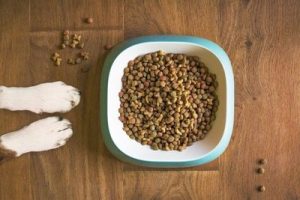Introduction
As pet owners, one of our most crucial responsibilities is ensuring that our beloved furry companions receive the best nutrition possible. A well-balanced diet is the cornerstone of their health and happiness. In this comprehensive guide, we will delve into the world of Pets Food & Diet Plan, covering essential aspects like understanding your pet’s nutritional needs, types of pet food, special dietary considerations, and creating a customized diet plan that caters to your pet’s specific requirements.
Understanding Your Pet’s Nutritional Needs
Before we dive into the specifics of pet food and diet planning, it’s crucial to understand the unique nutritional needs of different pets.
- Dogs:
- Proteins: Essential for muscle development and overall health.
- Fats: Provide energy and support skin and coat health.
- Carbohydrates: A source of energy.
- Vitamins and Minerals: Important for various bodily functions.
- Water: Essential for hydration.
- Cats:
- Proteins: Vital for muscle development and overall health.
- Fats: Provide energy and support skin and coat health.
- Carbohydrates: Not a primary nutrient, but some cats can digest them.
- Vitamins and Minerals: Important for various bodily functions.
- Water: Essential for hydration.
- Birds:
- Seeds and Pellets: Provide essential nutrients like proteins, fats, vitamins, and minerals.
- Fresh Fruits and Vegetables: Add variety and essential nutrients to their diet.
- Water: Always ensure they have access to clean water.
- Fish:
- Fish Food: Available in flakes, pellets, or frozen form, containing essential nutrients.
- Variety: Offer a mix of dry and live foods to meet their dietary needs.
- Water Quality: Maintain good water quality to keep fish healthy.
- Small Mammals (e.g., rabbits, guinea pigs, hamsters):
- Hay: A primary component of their diet, providing fiber and dental health benefits.
- Pellets: Offer complete nutrition but should be fed in moderation.
- Fresh Vegetables: Provide a variety of vegetables for essential vitamins.
Types of Pet Food
Now that we understand the nutritional needs of different pets, let’s explore the various types of pet food available:
- Dry Pet Food (Kibble):
- Convenient and has a longer shelf life.
- Beneficial for dental health by reducing tartar buildup.
- Suitable for dogs and cats.
- Wet Pet Food:
- Contains higher moisture content, aiding in hydration.
- Often more palatable, making it suitable for picky eaters.
- Available for dogs and cats.
- Raw Pet Food:
- Offers a diet that mimics a pet’s natural diet in the wild.
- Includes raw meats, bones, and vegetables.
- Requires careful handling to prevent bacterial contamination.
- More common for dogs than cats.
- Fresh Pet Food:
- Prepared with fresh ingredients and minimal processing.
- Available for dogs and cats.
- Customizable options may be available for specific dietary needs.
- Prescription Pet Food:
- Recommended by veterinarians to address specific health concerns.
- Formulated to meet specific dietary needs.
- Available for dogs and cats with allergies, urinary tract issues, or weight management needs.
Special Dietary Considerations
Some pets have unique dietary requirements or health concerns that necessitate special dietary considerations:
- Allergies and Food Sensitivities:
- Some pets may be allergic or sensitive to certain ingredients. Switch to hypoallergenic or limited-ingredient diets to address these issues.
- Weight Management:
- Overweight pets may require a diet plan tailored to their specific needs to achieve and maintain a healthy weight.
- Senior Pets:
- Older pets often require specialized diets with fewer calories but higher levels of joint support and antioxidants.
- Digestive Issues:
- Pets with digestive problems may benefit from diets formulated to be easy on the stomach.
- Urinary Tract Health:
- Specialized diets can help prevent or manage urinary tract issues, such as urinary stones.
- Dental Health:
- Dental diets with larger kibble or specific textures can promote dental health by reducing plaque and tartar buildup.
- Puppies and Kittens:
- Young pets have unique growth and development needs. Choose diets formulated for their age and size.
Creating a Customized Diet Plan
To create a customized diet plan for your pet, follow these steps:
- Consult with a Veterinarian:
- Seek guidance from a veterinarian to understand your pet’s specific nutritional needs and any health concerns.
- Select the Right Type of Food:
- Choose the appropriate type of pet food based on your pet’s species, age, and dietary requirements.
- Read Labels Carefully:
- Examine pet food labels to ensure they meet your pet’s dietary needs. Look for AAFCO (Association of American Feed Control Officials) approval.
- Measure Portions:
- Measure your pet’s food portions according to the recommended guidelines on the packaging. Avoid overfeeding.
- Monitor Your Pet’s Health:
- Regularly monitor your pet’s weight, coat condition, energy level, and overall health. Adjust their diet as needed.
- Stay Consistent:
- Maintain a consistent feeding schedule to establish routine for your pet.
- Treats in Moderation:
- Limit treats and snacks, as excessive treats can lead to weight gain and health issues.
- Hydration:
- Ensure your pet has access to clean, fresh water at all times.
Conclusion
Choosing the right pet food and creating a tailored diet plan is essential for the health and well-being of your furry, feathered, or scaly companion. By understanding your pet’s nutritional needs, selecting the appropriate type of food, considering special dietary considerations, and consulting with a veterinarian, you can provide the best possible diet for your pet. Remember that a well-balanced diet is the foundation of a happy and healthy life for your beloved pet.





